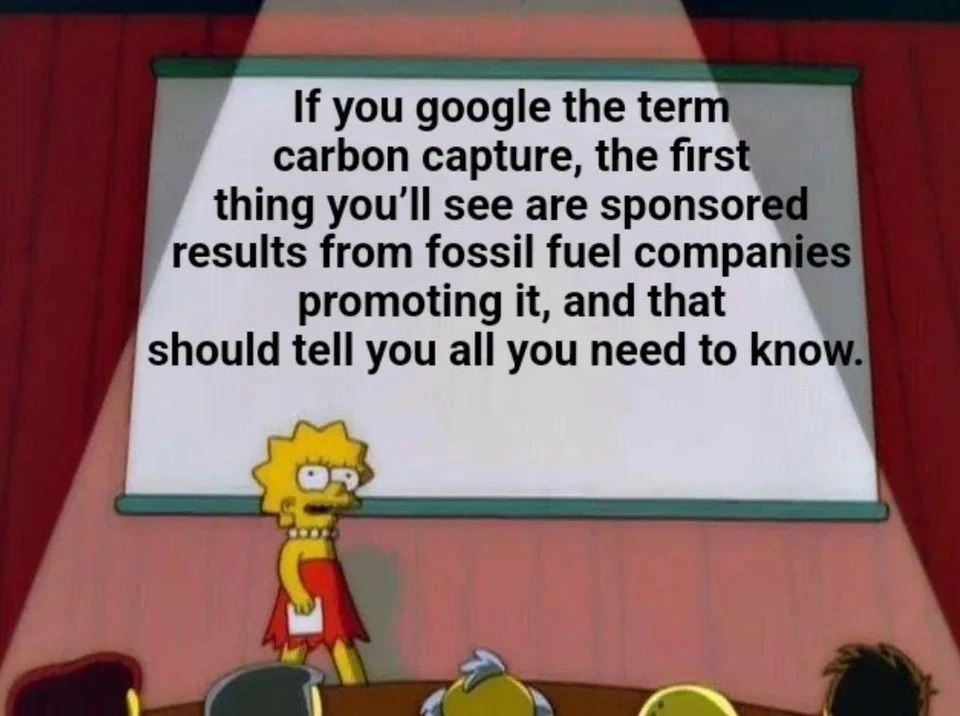this post was submitted on 10 Dec 2023
1412 points (96.4% liked)
solarpunk memes
3059 readers
164 users here now
For when you need a laugh!
The definition of a "meme" here is intentionally pretty loose. Images, screenshots, and the like are welcome!
But, keep it lighthearted and/or within our server's ideals.
Posts and comments that are hateful, trolling, inciting, and/or overly negative will be removed at the moderators' discretion.
Please follow all slrpnk.net rules and community guidelines
Have fun!
founded 2 years ago
MODERATORS
you are viewing a single comment's thread
view the rest of the comments
view the rest of the comments

I think I'm being too general in my wording, and you're getting hung up - an issue with typing on mobile is that I abbreviate everything. I mean CO2 sequestration/transformation.
Yet we see this in the biological sphere, where CO2 is taken into the plants, the plants die, get broken down, some of the CO2 they transformed into biomass is decomposed, and released as CO2 by the microbial community. Some of it (climate permitting) is transformed into soil organic carbon, which has multiple fractions. Some are short-lived, and readily broken down by the microbial community (more CO2 release); some fractions (humus, or protected SOC) are much longer lived, and result in a net loss from the C system.
All of this is unsurprising, given that this is the natural system, and therefore the system ultimately balances out, due to multiple sources of inputs and outputs.
I agree about cost/energy to break CO bonds, however, the examples I've seen seem to indicate that it's more stable long term.
Biochar seems interesting too, yet that requires a lot of energy input, and soil application has mixed results. You could make biochar, and then stuff it deeper into the soil or into geological formations, perhaps. Better if that biochar comes from food wastes, livestock production wastes etc. than plants.
As I said, it's a fucking huge problem with a million facets. We're so categorically fucked...